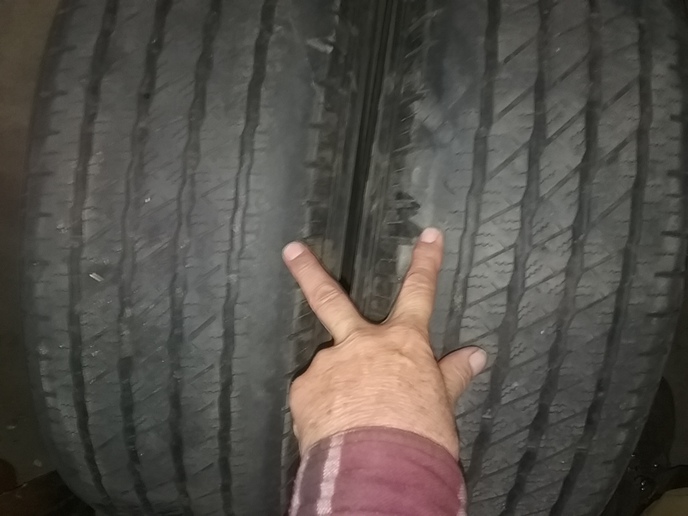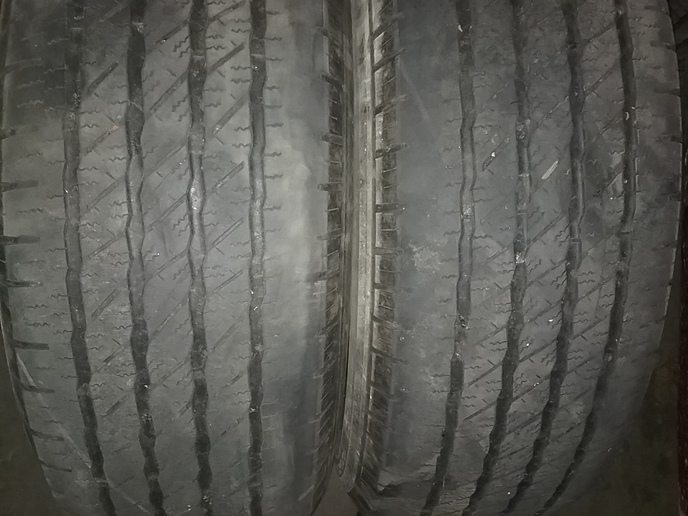Geo-TH,In
Well-known Member
My Michelin p245/70/17 LTX are 70K tires with 88.5K miles. I replaced them because all the tires had wear in just the inside edge. Almost bald. Even had a cut. I replaced them and had the Tire Barn check the alignment. They said alignment is good. They showed me the print out.
I would rotated and balanced tires every other oil change, 6K.
So, why just wear on the inside? The rest of tread hadn't even worn down to the wear bars.
I figured I got 9 years out of these tires, 18k more miles than expected, winter is coming, and the last thing I want is to blow a tire when I'm pulling dump trailer which total will be about 8K#.
I asked the Tire Barn, So why just the inside of the tires? Reply don't know. What's your answer? Think if I upped the air pressure the middle would wear more and corner less?
Geo


I would rotated and balanced tires every other oil change, 6K.
So, why just wear on the inside? The rest of tread hadn't even worn down to the wear bars.
I figured I got 9 years out of these tires, 18k more miles than expected, winter is coming, and the last thing I want is to blow a tire when I'm pulling dump trailer which total will be about 8K#.
I asked the Tire Barn, So why just the inside of the tires? Reply don't know. What's your answer? Think if I upped the air pressure the middle would wear more and corner less?
Geo



